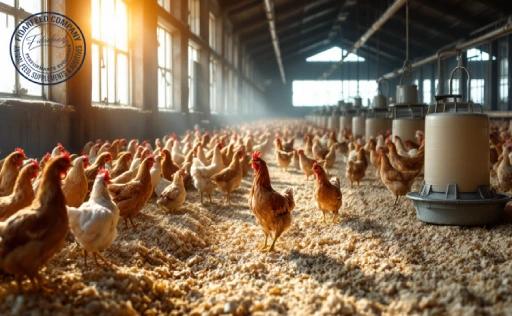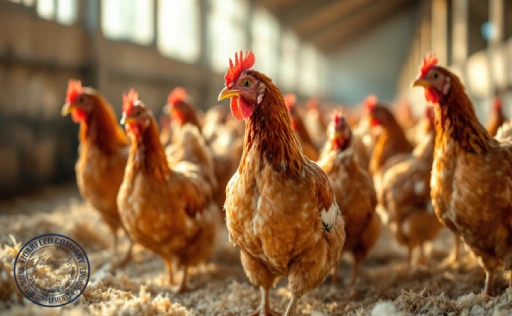Why Silage is a Game-Changer in Modern Farming Practices
Benefits of Silage for cow calf growth are undeniable in today’s livestock industry. As modern farming evolves, farmers and cattle breeders are constantly searching for efficient, cost-effective, and sustainable feeding solutions. Silage has emerged as a game-changer, providing high-quality nutrition that supports the healthy growth of calves while optimizing farm operations. Unlike traditional hay or pasture grazing, silage ensures consistent feed quality, improves digestion, and enhances overall herd performance.
Understanding Silage in Modern Livestock Farming: What It Is and How It Works
Silage is fermented, high-moisture stored fodder that preserves the nutritional value of forage crops such as corn, grass, or alfalfa. The fermentation process occurs in airtight conditions, promoting beneficial bacteria that convert sugars into lactic acid.
Learn more about: Silage Starter
This natural preservation method helps retain essential nutrients, ensuring that cattle receive a balanced and digestible diet year-round. By maintaining nutritional integrity, silage plays a crucial role in modern farming by reducing feed waste and enhancing livestock productivity.
The Nutritional Benefits of Silage for Cow Calf Growth in Sustainable Farming
Young calves require a nutrient-rich diet to develop strong bones, muscles, and immune systems. Silage is packed with essential nutrients like proteins, carbohydrates, fiber, and vitamins, making it a superior feed option.
Learn more about: Silage Time of Year and Its Impact on Dairy Production
Studies indicate that calves fed silage-based diets gain weight faster and exhibit better health than those on dry feed alone. The high energy content in silage supports optimal growth, reducing the time it takes for calves to reach market weight or breeding readiness.
Boosting Digestive Health in Modern Cattle Farming: How Silage Improves Feed Efficiency
Healthy digestion is the foundation of livestock growth and productivity. Silage promotes gut health by introducing beneficial microbes that enhance the fermentation process in a cow’s rumen.
Learn more about: Silage vs. TMR: Which is Right for Your Herd?
This, in turn, improves nutrient absorption, reduces digestive disorders, and increases feed efficiency. By feeding silage, farmers can ensure their calves maximize nutrient intake, leading to healthier growth rates and improved overall well-being.
Cost-Effective Feeding Strategies in Modern Farming: Saving Money with Silage
Feeding livestock can be one of the most significant expenses for cattle farmers. Silage provides a cost-effective solution by reducing dependency on expensive grain-based feeds while maintaining high nutritional value.
Learn more about: Did You Know Livestock Productivity with TMR Silage Can Double?
Because silage is preserved efficiently, it minimizes spoilage and feed wastage, making it a more economical choice. Additionally, producing silage on-site allows farmers to cut down on transportation costs and market price fluctuations, ensuring a more stable and predictable feeding strategy.
Enhancing Milk Production and Calf Growth with High-Quality Silage
For dairy farmers, milk production is directly tied to the nutrition of lactating cows. High-quality silage provides the necessary energy and nutrients for increased milk yield, which is essential for nursing calves.
Learn more about: What Is TMR Silage and Why Is It a Smart Choice for Livestock Feed?
When cows produce more nutrient-rich milk, calves benefit from stronger immune systems, better digestion, and faster weight gain. Farmers who prioritize silage in their feeding programs often see improvements in both milk quality and calf development.
Year-Round Feed Supply: How Silage Helps Farmers Overcome Seasonal Challenges
Seasonal changes and unpredictable weather conditions can make consistent feeding a challenge for livestock farmers. Unlike fresh pasture, which is limited by seasonal availability, silage provides a reliable year-round feed supply.
Learn more about: TMR Silage Production: A Farm-to-Feed Process
This is particularly crucial during droughts, harsh winters, or dry summers when fresh forage is scarce. By incorporating silage into their feeding programs, farmers can safeguard their herds against nutritional deficiencies and maintain steady growth rates regardless of climate conditions.
Practical Tips for Storing and Feeding Silage for Maximum Benefits
To maximize the benefits of silage, proper storage and feeding techniques are essential. Here are some practical tips:
- Use airtight silos or plastic-wrapped bales to prevent spoilage and ensure high-quality preservation.
- Harvest at the right moisture content (typically 60-70%) to promote optimal fermentation and nutrient retention.
- Monitor for mold or spoilage by regularly inspecting silage storage areas and discarding any contaminated feed.
- Introduce silage gradually to calves to allow their digestive systems to adjust and prevent potential digestive upsets.
- Balance silage with other feed sources to ensure a well-rounded diet that meets all nutritional requirements.
Choosing the Right Silage for Your Cow-Calf Operation
Not all silage is created equal, and selecting the right type depends on your herd’s specific needs. The most common types include:
- Corn Silage – High in energy and carbohydrates, ideal for growing calves and lactating cows.
- Grass Silage – Rich in fiber, suitable for balancing rations with grain-based feeds.
- Alfalfa Silage – High in protein and minerals, excellent for young calves and dairy cows. Farmers should consider forage quality, nutritional requirements, and storage capacity when deciding which silage to incorporate into their feeding programs.
Conclusion: Why Silage is a Smart Investment for Cow-Calf Growth in Modern Farming
Silage is more than just a feed option—it’s a strategic investment in the health and productivity of a herd. By ensuring consistent nutrition, improving digestion, reducing feed costs, and supporting year-round feeding, silage has proven to be an invaluable tool for modern cattle farming. Whether you’re a seasoned breeder or new to the industry, incorporating high-quality silage into your feeding program can lead to healthier calves, improved milk production, and greater overall efficiency.
Have you used silage on your farm? We’d love to hear your experiences! Share your thoughts, ask questions, or leave a comment below!









